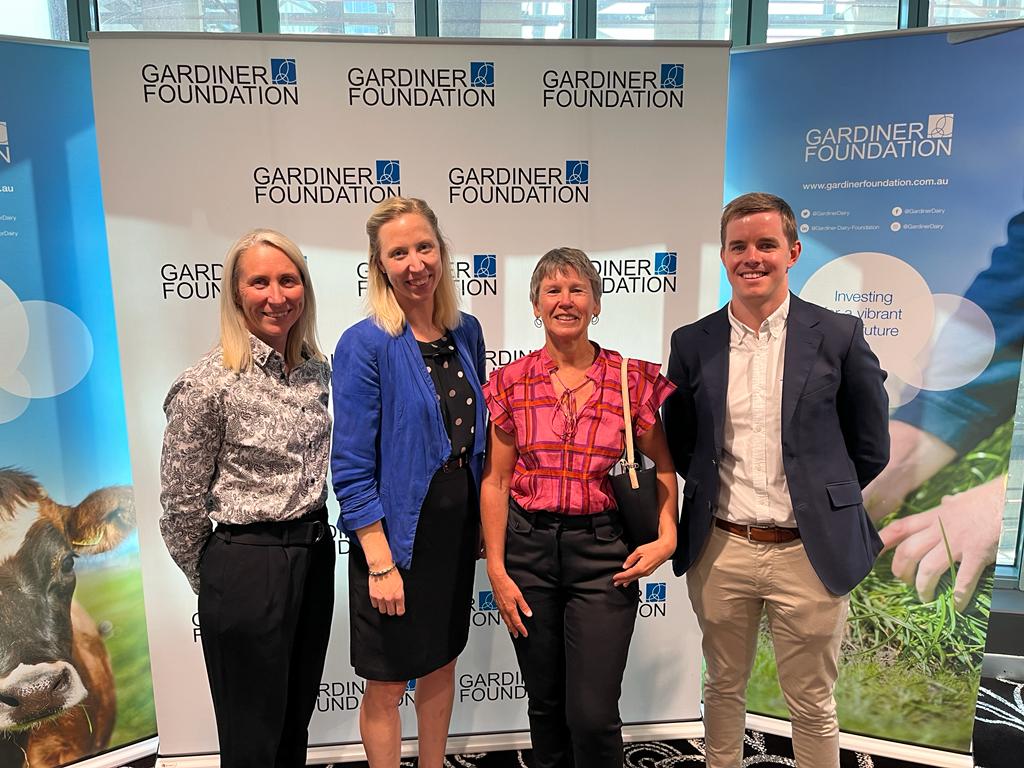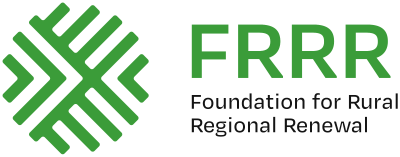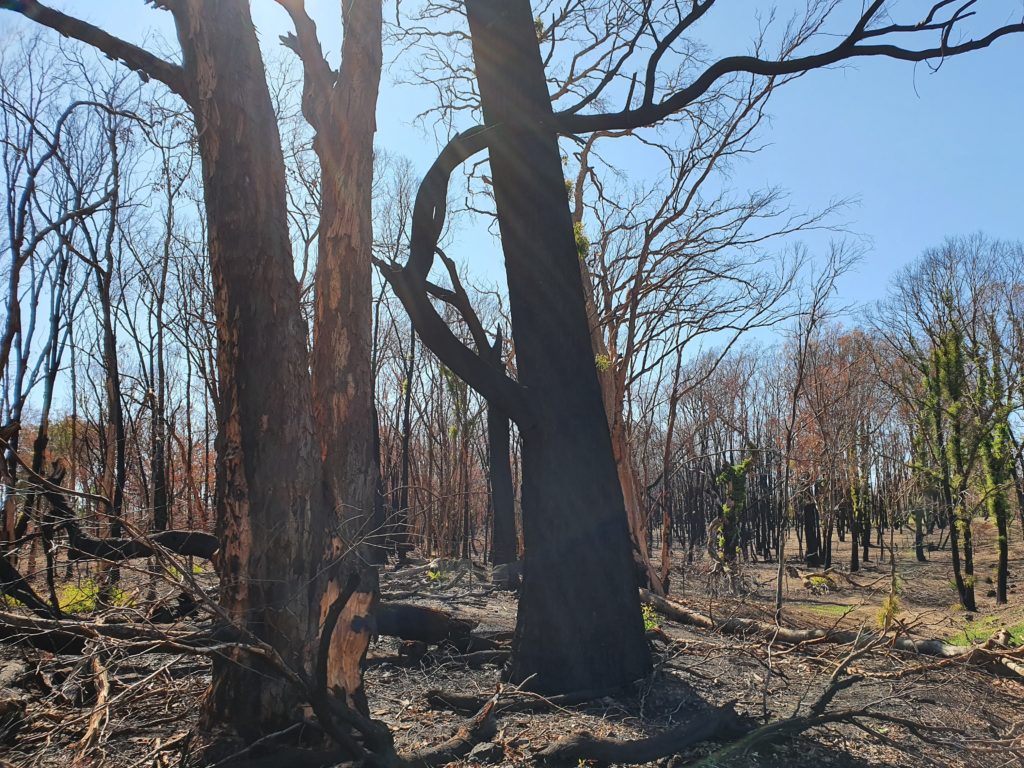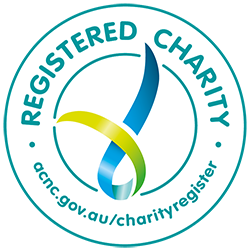Foundation for Rural & Regional Renewal (FRRR)
At FRRR, we’re in a very privileged position to hear first-hand from community groups, through conversations on the phone, in-person visits and reading grant applications. Below we’ve gathered some of the key themes that have emerged over the last quarter. If you’d like to know more, get in touch with us and we’d be happy to elaborate.
What are the great opportunities and things to celebrate?
Innovation and sustainability are top of mind: Rural groups in outback areas are increasingly using social enterprises to increase local employment opportunities, including offering services for tourists’ during the dry season.
For communities in our place-based capacity building program in NSW – IRCF – developing sustainable funding models for small NFP’s is a priority, with many expressing an interest in social enterprise models.
Communities are embracing renewable energy storage and we are seeing increasing requests (especially from applications to SRC in NSW) for solar panels and batteries, specifically focused on providing power during disasters.
Programs for social and emotional connection are thriving and requests for funding for such projects is increasing in NSW. Communities are using lots of different events/activities to bring people together such as festivals, activities related to the arts, community lunches. Men’s emotional wellbeing is also getting more focus, albeit indirectly via social events that don’t directly focus on the issue. Instead, the focus is on creating connection and reducing social isolation.
Young people continue to take action on issues that are meaningful to them. Recent themes include ensuring access to STEM learning and experiences for children in remote locations, raising awareness about disability to remove barriers so everyone can achieve their dreams, and being proactive about conversations that shine a light on mental health in the regions. Funding support can be game changing to help generate momentum for their actions to be seen, and voices to be heard.
Community communication networks are key to the success of community led preparedness efforts. Volunteer-run Community Recovery Committees’ (CRC’s), which were formed in most Victoria local government areas impacted by the 2019/20 bushfires, are still working tirelessly toward their objective of community-led preparedness. Working with Councils and emergency service agencies, these local systems for communication intend to ensure critical information is delivered consistently and through both formal and informal local communication channels to reach as many people as possible.
Grants are important but so too is capacity building. We take pride in the fact that we offer ‘more than money’, spending considerable time each year coaching and supporting applicants, providing guidance to help them shape an application and tailored feedback if they are unsuccessful. Sometimes that support is on the phone, other times face to face. Earlier this year, the team did three trips across regional Queensland, spending 28 days on the road in total, meeting 85 organisations one on one, many of whom were new to FRRR. It’s rewarding when our support pays off, as has happened recently. One applicant was unsuccessful in three rounds but took on board feedback and their project has now been recommended. This is especially gratifying as it is a project led by a local organisation in a remote, deeply COVID-impacted First Nations community.
What’s challenging RRR communities?
RRR Australia is in no way immune to strain of cost-of-living increases, housing shortages and inflation: Social service and food security organisations are seeing large spikes in need, with some NSW food pantries now servicing more people than at the height of bushfire recovery. On recent visits to regional Queensland, the team observed escalating impacts from these costs, especially in accessing fruit and veg.
Housing shortages are limiting communities’ opportunity for economic and social growth. Barriers like a lack of available land and an inability to secure finance, particularly in remote locations, limit opportunities for housing, and as such, economic and social growth. In some cases, we heard that banks require 40% deposit.
Community groups are finding it challenging to confidently budget projects happening months in the future, and remote areas are applying for larger COVID recovery grants to mitigate increasing costs of transport and goods.
The marathon of recovery continues: Some bushfire-impacted communities are concerned about how they will manage long-term recovery, with the Australian Government’s Black Summer Bushfire Recovery funding winding up. In addition, many flood impacted communities on the eastern seaboard have reported feeling abandoned and isolated, as recovery funding dries up, and with many residents remaining displaced awaiting essential repairs to their homes and local infrastructure. This all leads to additional pressure to housing and to demand for support from grassroots groups.
Community organisations are stretched and volunteer capacity is low: Many communities note high levels of pressure placed on local not-for-profit groups under these circumstances with some ceasing to operate leaving some communities without access to services. A few champion volunteers are often driving the work of multiple community groups, featuring on multiple committees, and while this leadership is incredible, it makes succession planning a challenge for small communities without a pool of individuals to draw from. Our SRC program is even starting to see an increase in return of funds and project variation requests, mainly due to the impacts of disaster events, lack of volunteer capacity. Ongoing community fatigue is also impacting participation and general readiness to participate in many drought-preparedness projects – and some regions are already moving into drought conditions.
Round 17 of our Strengthening Rural Communities program received the most applications of any program since we began. We’re delighted to have such great presence for RRR community organisations, but other factors such as the impact of disasters, delay in releasing new grant programs from the new NSW Government and increasing costs facing organisations are also responsible for the high application rate.
Our staff connect with communities daily, whether it be over the phone, via video calls or in person. While every community is different, common themes emerge from what they tell us. Here’s a snapshot of what we’ve heard in the last few months:
- In NSW, VIC and SA, there is worry that the ‘news cycle’ has moved on from flooding, which is concerning for those on the ground given the need for funding and support for impacted regions. In SA, there is also concern that raising funds for flood recovery may be hampered given length of time since floods started and new disasters (e.g. February’s bushfire in Port Lincoln). In NSW, many communities are moving past the ‘mop up’ stage and on to the tedious stage of dealing with insurance claims and red tape, and some groups tell us energy is waning. In VIC, there are large numbers of groups seeking flood recovery funding, and FRRR has recently been supporting a number of Neighbourhood Houses that have been providing significant additional support across their community.
- Following Ex-Tropical Cyclone Ellie and flooding which affected a vast area in NT and WA, some smaller more remote communities are having difficulty accessing relief and support targeted towards those communities highlighted by the media. Extended family networks living outside flood-affected communities are working to broker solutions with service providers on ground. Damage to the road network and the subsequent transport blockages are having flow-on impacts for remote communities outside the immediately impacted area. These more distant communities are also seeking relief support to maintain basic services and food security.
- FRRR’s outreach trip to NT is resulting in a surge in applications, both with directly contacted groups and via local referrals. We are seeing a rise in local government organisations working in remote parts of NT that are seeking to deliver projects that will increase community connections and build community resilience.
- In VIC, there is a continued strong demand for funding for festivals and events to support community connection, celebrate place and cultural identity, and boost economic development.
- In the small communities of WA (populations under 4,500), there is strong demand for projects providing access to services and activities.
- In QLD, funding is commonly sought to assist with community infrastructure and equipment projects intended to develop organisational resilience and capacity.
- In SA, there is strong demand for projects to repair community halls and sheds, as well as to assist with health and mental health and wellbeing. There is also concern for education and employment pathways for young people to prevent them from leaving smaller towns in their search for work and education, which is often a real financial strain on families.
- While the impact of multiple disasters builds, some groups are concerned that many funders only provide grants for ‘declared disasters’ – when it can also be localised disasters, storms, fires, etc, that have a big impact on communities.
- A learning in TAS that we are reminded of in every state we visit, is that groups often lack the capacity (time) to apply for funding, and in some instances, the grant ‘literacy’. Local groups are keen to attend grantseeker workshops to increase skills and confidence.
- Cost of living pressures are resulting in increasing demand for food relief. In TAS, Neighbourhood Houses are vital for as a place for connection and food relief (most have community gardens that provide free or affordable fruit and veg, as well as ‘freezer meals’). They also often provide a volunteer based transport service to get the disadvantaged and elderly to health appointments, and rising costs generally are putting this service in stress.
- Housing pressures (rent, lack of rental options), which were exacerbated during COVID, are even more of a concern with rising costs of living. Discrete homelessness (i.e. living in campgrounds) is increasing, however this is not an option in summertime with holiday makers using these facilities. There’s a strong desire to develop local solutions for housing pressures.



You may also find this recent interview with our Disaster Resilience and Recovery Lead, Nina O’Brien, insightful. In a conversation with our partners Suncorp, Nina shared her thoughts on why communities banding together build back better than bricks and mortar.
There are many more insights we could share, so if you’d like to know more about any of these comments, or are interested in a particular geography or issue, please get in touch via info@frrr.org.au.
Our Program Portfolio Leads recently presented to the FRRR board on some of the common issues and themes emerging in funding requests that we are receiving from community groups, and through conversations with local community leaders. They a presenting a picture of growing pressure on local service systems, depletion of capacity to adapt to constantly changing environments, and divergent experiences of community life in areas more and less impacted by COVID restrictions. Some highlights are shared below:
Investing in people to aid recovery after disruptions
Grantseeker workshops make a difference!
Communities adapting and evolving
Each quarter, we ask FRRR’s staff to share some of their observations from speaking with community leaders across the country, and reviewing grant applications. Below are a few comments from looking back on the first quarter of FY21.
It’s a universal truth that communities that have strong local leadership are best placed to thrive. However, offering support for particular elements or activities perceived to be needed can create a deficit inference and shame. A recent comment caused the team to pause and reflect: “Conversations about capacity are complex because people can feel shame about not having capacity.”
It’s a good reminder, as often offering funding for a particular activity can infer a judgement. It can imply that ‘it’ is absent or ‘not up to scratch’ in that community or not-for-profit organisation. At FRRR, we take a strengths based approach to granting. Language and wording matters and we are grateful to have such honest conversations with our community partners.
ANOTHER strong theme that continues to come through is the extent of the impacts of the summer bushfires, and the impact of COVID-19 on recovery. For example, in a recent application one community leader wrote: “The conversations revolved around the effect of running on adrenalin for the months before and after Christmas and the feeling of emptiness that followed. There was no time to come together before the community was once again under threat. The fires had denuded the landscape and when the rains came, many roads and properties were further affected by mudslides. The cleaning up started again. The normal community celebrations were delayed or cancelled as COVID-19 forced individual distancing. Somehow there needs to be a way of marking closure for this community, most of whom were volunteers in one capacity or another.”
COVID-19 and the ongoing drought are also affecting community groups’ fundraising capacity. For example, the Texas Kindergarten told us, “Annually we raise approximately $25,000 a year to help keep the Kindergarten open, pay staff, pay day to day expenses and purchase resources. Due to the ongoing effects of the drought individuals and businesses in our region are still really battling. It has become more and more difficult for our strong and resilient little community to help the Kindergarten financially. Now with COVID-19 we are unable to do any fundraising at all which will reduce our income this year dramatically. ”
Volunteer fatigue and decline is also becoming more apparent in various communities. For example, as Dirranbandi Arts Council, in Queensland’s far south west, explained “Our precinct has three separate buildings, which we wish to have open on a more regular basis for our whole community and travellers to access. But this is impossible as we just do not have the numbers. We have tried in the past to open just one of the buildings with the help of volunteers but this has become increasingly difficult as our volunteer base diminishes and those available age.” This presents new challenges and communities need to find new ways to engage volunteers, or source funds to pay for this service.
In other communities though, young people are stepping up and taking the reins. FRRR recently helped facilitate this blog from young community leader, Sam Kane, in which he tells the story about how he and some colleagues stepped up to get a pool in their community, and what they’ve gone on to do.
However, in the medium to longer-term, it’s likely that COVID-19 will have benefits for remote, rural and regional Australia. There are strong signs of population movement toward regional centres, as reflected by the Regional Australia Institute’s recent work on regionalisation. International travel restrictions too mean that more Australians will holiday at home. This is good news for regional communities, but it will also be critical for rural areas to be ready to take advantage of both relocation to the regions and tourism. Regional tourist attractions, remote working opportunities, community connectedness, and cultural vibrancy are competitive advantages that smaller rural areas can harness, however, foundational infrastructure and services are needed to retain and build momentum. Unfortunately, there is significant long-term underinvestment in community assets and local services which improve liveability and quality of life, increase attractiveness and competitiveness, and foster innovation and revitalisation. This is why areas such as community halls, childcare services, aged care services and youth engagement activities are just some areas that FRRR seeks to fund across many programs and regions. We need more funds that are broad and will have multiple flow-on effects in communities.
As the population in regional areas grows, there is more focus on issues relating to public transport. For example, Carroll is a small village within the Upper Namoi Cotton Growers Area. There is no bus service in the area and the residents are 20 km from services in the next town of Gunnedah. A local committee raised money to buy the bus, purely from local community fundraising and very generous support of many local businesses in Gunnedah and Tamworth. However, not all communities are able to do this, and we are seeing more and more requests to support this kind of service.
If you would like to know more, contact FRRR.
COVID-19 has impacted rural communities in countless ways, with increased vulnerability and disadvantage being felt in many communities grappling with successive setbacks, including drought, bushfire and existing disadvantages exacerbated by imposed restrictions.
This means FRRR’s work is more important than ever, as Australia emerges from and transitions into new ways of working, living and delivering services.
While FRRR staff are still working from home, they are connecting daily with communities across the country. Below are some of the insights from the calls, queries and requests they are receiving day to day.
There have been high levels of caller concern around the mental health of their communities, given COVID follows several natural disaster events. NSW/ACT Program Manager Jacki Dimond says that there are also increased personal stress levels around not being able to deliver on approved grant activities and / or timelines. She has been spending much of her time considering more project variations than usual.
“Callers have reflected much relief for the support of our flexibility and desire to support them through the variations process to identify alternative activities or delivery mechanisms, such as the Gunning Arts Festival going online, or extending or deferring acquittal periods where needed, ” Jacki noted.
Vivienne McCrory, Grants Officer for Victoria, SA and Tasmania, echoes Jacki’s comments noting that bushfire affected communities are asking if programs will be assessed the same way due to COVID-19.
“They are still applying, but not sure if the project will still go ahead as planned due to restrictions and whether it would affect their grant chances. They have mentioned exhaustion and frustration over the flow of events since Christmas (on top of the drought).”
Another common theme is while some groups have the option to take activities online, inconsistent telecommunications access and mixed levels of digital literacy means it’s not a realistic option for some groups.
“For example, I received a phone call recently from the Yinnar Memorial Hall over 60’s Exercise group. We have funded the program for two years and up to 40 people were coming each week. They are now delivering the program via zoom and many elderly members are having issues connecting. The internet is also poor in the area!,” explained Hannah Jakab, who works on FRRR’s disaster recovery programs.
VIC/SA/TAS Program Manager Carlene Egan is seeing increased requests to fund local people to take on recovery coordination roles.
“Bushfire affected communities are taking charge of their own recovery with known and trusted people and ensuring funds are directed to where they identify as most needed.”
From a drought support perspective, Deanne Cavalier is seeing reduced volunteer capacity due to COVID-19.
“Conversations with community groups have identified a decrease in volunteering at this time due to the pandemic, as their focus turns towards their families and concerns of job security and general fatigue. Volunteers are often older and health and safety concerns relating to COVID-19 this naturally has had flow-on effects on the capacity of community groups to maintain continuity of services and their ability to maintain momentum on community-focused projects.”
While it’s no longer on the front pages, drought is still a very real issue in large parts of the country as this map of Queensland shows, and this story from WA.
“Despite the wetter start to 2020, the long-term accumulated rainfall deficiencies continue in many parts of Australia and with these continued deficiencies over an extended period, drought continues to be prevalent across much of rural Australia and recovery will be a slow process,” explains Deanne.
Meanwhile, Alli Mudford, Program Manager for the Investing in Rural Community Futures (IRCF) program says that it highlights the importance of building capacity, not just funding ‘things’.
“Building good relationships within each community is a critical foundation for success. The benefits from regular facilitated connections (rather than just providing grants) must not be underestimated and the IRCF evaluation has processes in place to incorporate these learnings.
“We are also seeing that capacity change in the not-for-profit sector crosses generations. Insights show that the younger generation are more than willing to work with and across other not-for-profit groups in the community.”
Rural communities are eternal optimists and innovators and despite the challenges, community groups have been able to adapt their models to keep a source of income, such as offering delivery services, making hand sanitiser or face masks. We are inspired by the growing success of community-led solutions – especially the renewal of local media ownership, which is a reversal of media closure trends.



